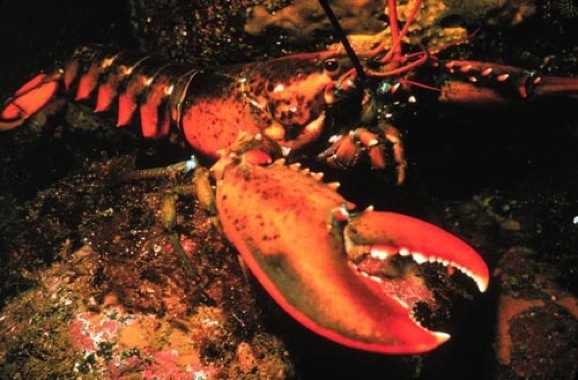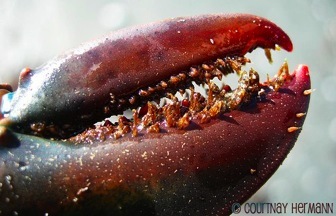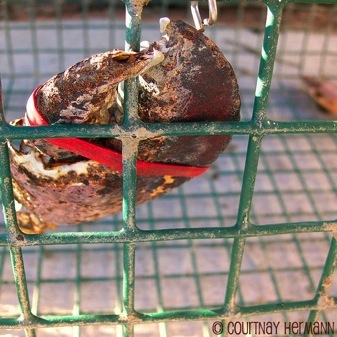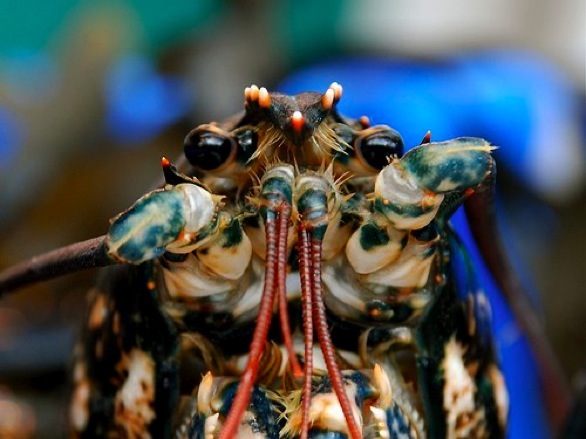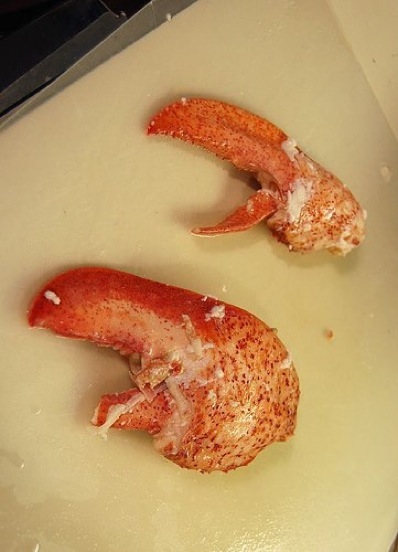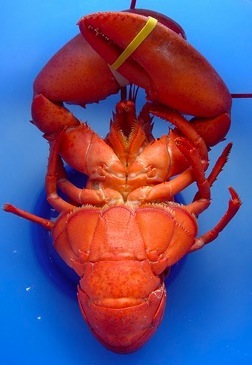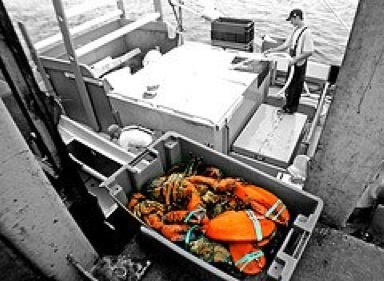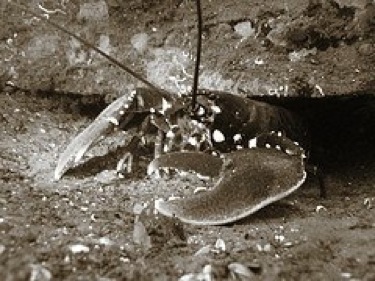
Holy cow ... er, Lobster!
These adaptations will surprise and amaze you ... prepare yourself for to be astonished!
The body plan consists of two main parts: the cephalothorax, which combines the head and the mid-section, is often called the body and is covered by the carapace (hard shell), and the abdomen,which is commonly referred to as the tail. The cephalothorax is made up of 14 fused segments that each have a pair of appendages. The abdomen contains six segments that are unfused to allow for flexibility and ease of movement, especially in compromising and dangerous encounters. The tissue connecting the segments of the abdomen is soft, unlike the carapace.

Chelipeds
The first pair of legs on the cephalothorax host the claws which can quickly grab prey. There is a larger crusher claw and a smaller pincher claw to cut. The crusher claw (pictured below on bottom) has large "teeth" that enable shell breakage of the prey. The pincher claw (pictured below on top) has several little "teeth" used for cutting. Lobsters exhibit handedness so to speak, meaning if the crusher claw is on the right side, the lobster is considered “right-handed.” If a lobster loses a claw, leg or antenna, it regenerates the appendage in the next molt.
Pereiopods
The four other pairs of walking legs on the cephalothroax and are used strictly for locomotion.
Rostrum
The rostrum is the tip of the cephalothorax
and is located between the two eyes and
provides protection for the eyes when lobsters
clash.
Abdomen
The abdomen is typically referred to as the
“lobster tail.”
Uropods
The segments that form the flippers at the
extension of the tail.

Digestive System
The American lobster has a
unique digestive system that
consists of three stomachs.
The first stomach (foregut)
houses a set of grinding teeth
so, essentially, the lobster
actually chews food with the
stomach, not with the mouth.
After “chewing” the material is
passed into the midgut for
further absorption. However,
large material that cannot be
absorbed is passed into the hind-
gut, then into the rectum and out
of the anus.
Excretory System
Wastes are eliminated at the base of the lobster’s antennae via the excretory system. Urine waste is eliminated here as well via nephropres; it is thought that urine contents can also help in determining the sex of the lobster. Wastes can also be lost through the gills or the digestive glands or when the lobster molts.
Respiratory System
The respiratory system consists of 20 pairs of gills located within the bronchial chambers on either side of the cephalothorax. Influxes of water pass through the openings between the legs, over the gills and towards the head. Reversal of these water currents eliminates debris.
Circulatory System
The circulatory system of a lobster is fairly simply and considered “open;” it consists of a single-chambered heart that lies above the stomach. The heart is made of of several linearly arranged chambers that allow for a large amount of blood to flow into and out of the surrounding tissues. An adult lobster’s heart beats 50 to 136 times a minute. It is believed that temperature has an effect on the pH of the hemolymph of lobsters and it is thought that the acid-base status of the hemolymph is what modulates cardiac performance in this species.
Reproductive System
To continue on this amazing journey through lobster land, check out the world of lobster love, don’t worry, I kept it PG-13!
To return to the home page, click here.
